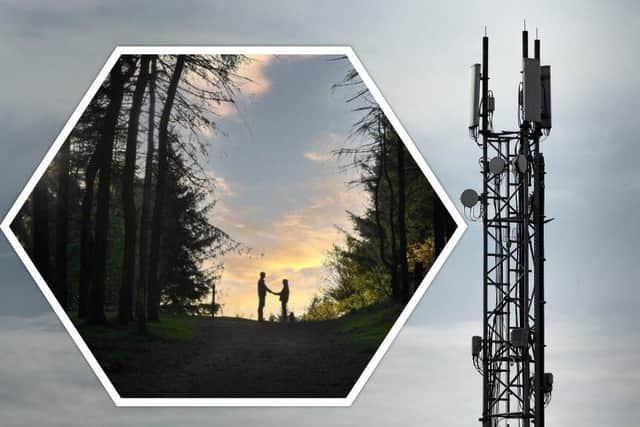Mobile phone mast bid for Beacon Fell Country park near Preston
and live on Freeview channel 276
Plans have been lodged to erect the 40-metre-tall structure in Beacon Fell Country Park, north of Goosnargh.
If approved by Preston City Council, the so-called ‘lattice tower’ and its three antennae would spring up in a location that forms part of the Forest of Bowland Area of Outstanding Natural Beauty (AONB). Its installation would require the removal of five trees from the Carwags Lane site, with replacement planting being carried out to compensate for the loss.
Advertisement
Hide AdAdvertisement
Hide AdThe proposal is part of the government-backed Shared Rural Network, a collaboration between mobile operators O2, Vodafone and Three. The project aims to ensure that 95 percent of the UK enjoys coverage from at least one operator by 2025 in order to access a fast mobile broadband service.


According to telecoms infrastructure firm Cornerstone, which is behind the Beacon Fell plans, the proposed site has been chosen because it would enable the mast to be “discreetly positioned in a location surrounded by mature trees" of approximately 30 metres in height.
Its application to the city council adds: “The trees provide excellent screening from all directions. The applicant acknowledges that the mast is slightly taller than the surrounding trees - however, it is imperative that the antennas are not blocked by the trees as the signal would suffer severe interference.
“Furthermore, the transmission dishes need to have a clear line of sight to other masts in the area in order to wirelessly connect to the network.”
Advertisement
Hide AdAdvertisement
Hide AdThe company says that lattice-style structure has been chosen because it is “visually permeable and will help the mast blend into its backdrop from medium to long range views”.
It adds that the site is considered “the single most appropriate location” to improve mobile coverage in the area and will not only enhance communications, but make those working within and visiting the local area - such as crofters and hillwalkers - safer.
A tree survey accompanying the application notes that three trees will have to be cut down to make space for the mast and its base and a further two in order to facilitate a working area for the installation process. The removal is described as having “low harm to the significance of the setting”.
Other equipment that would be required within the 100 square metre site includes an equipment cabinet and a generator and associated biofuel tank, which will ensure service is maintained in the event of power loss caused by events such as extreme weather. The biofuel generator is to be completely enclosed within the compound to contain any noise or smell that may be produced, the planning application states.
Advertisement
Hide AdAdvertisement
Hide AdThe site would initially be made available to Vodafone, but the mast is a shareable structure that could be opened up to other providers in future.
The full application can be viewed and commented upon by using the reference number 06/2023/0259 on the Preston City Council planning portal.